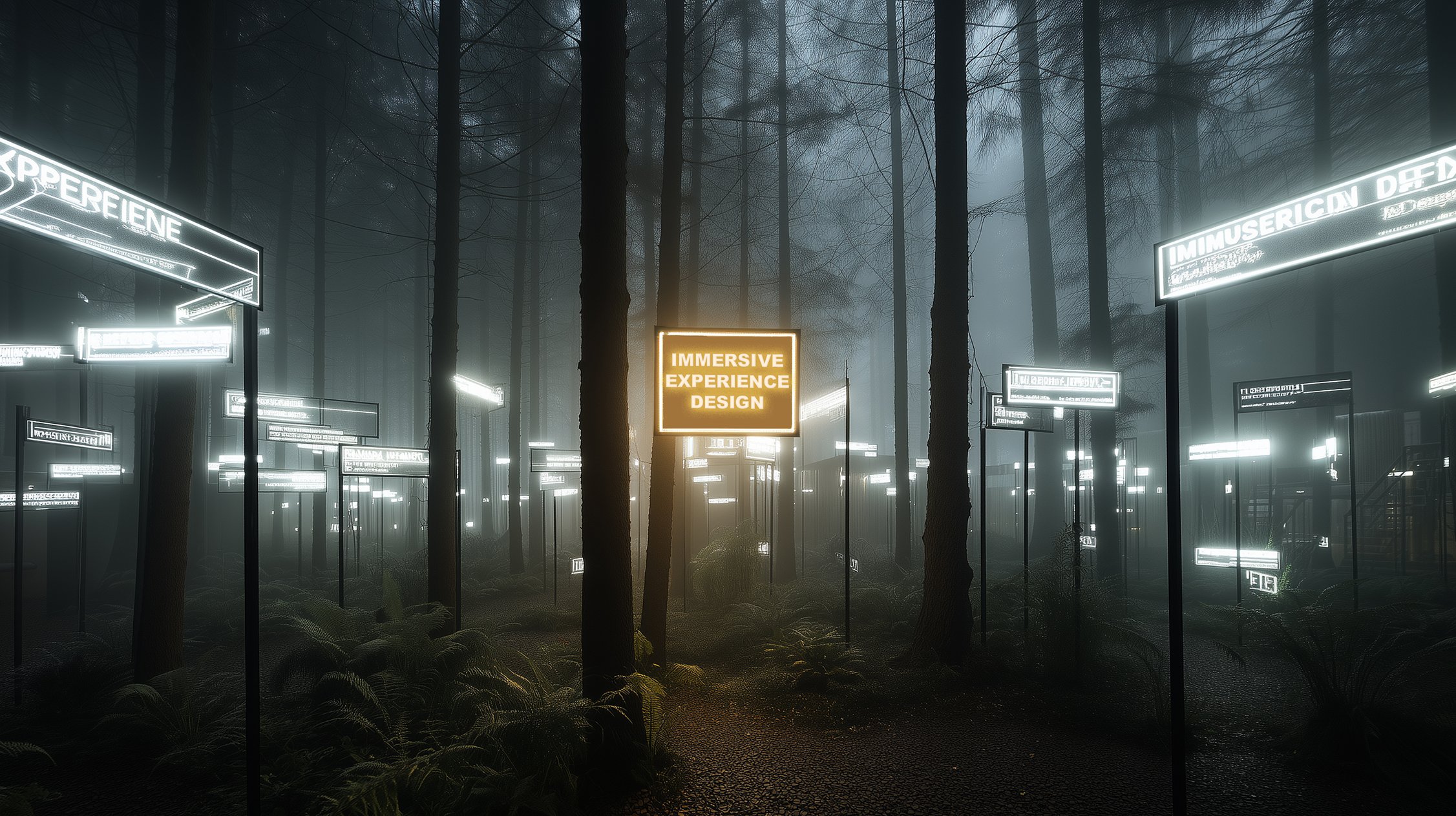What Do We Call This Work?
As the demand for multi-sensory, emotionally resonant environments continues to grow, so too does the confusion around what to call this evolving discipline. You’ve probably seen a wide range of terms thrown around—Experiential Design, Spatial UX, Immersive Design, Digital Experience Design, even Extended Reality (XR) Design. Each reflects a different lens on what we do. And while diversity in perspective is healthy, the lack of consistent naming has become a real challenge for practitioners, clients, and collaborators alike.
We call our work Immersive Experience Design. But let’s take a step back and explore why naming matters—and why so many different ones have emerged.
A Field Without a Name Struggles to Mature
Naming isn’t just semantics—it’s identity. A clearly defined discipline allows for shared language, better client education, stronger career pathways, and a clearer sense of value in the marketplace. Without that, we’re left explaining ourselves over and over again, adapting our language to each audience, and risking dilution of purpose.
This ambiguity creates a gap: clients may struggle to find the right partners; talented designers may not realize there’s a whole field for the kind of work they want to do; and interdisciplinary collaboration becomes harder without a common framework.
We believe it’s time to acknowledge the complexity of our ecosystem—and start drawing lines between the terms that are often used interchangeably.
The Terms (And Their Pros and Cons)
Experiential Design - Most common in architecture, events, and marketing.
Pros: Holistic, human-centered, widely used in retail and event design.
Cons: Often conflated with customer experience (CX) or UX design. Doesn’t inherently imply immersion or spatial depth.
Immersive Design - Popular in the world of XR, gaming, and theatrical staging.
Pros: Emphasizes absorption, presence, and suspension of disbelief.
Cons: Too closely associated with digital technologies (VR/AR); may exclude tactile or analog immersive experiences.
Spatial UX (User Experience) - Emerging from architecture and service design.
Pros: User-centered and grounded in behavioral flows. Brings rigor to how people navigate space.
Cons: Reads as overly technical or clinical. May feel limiting for emotionally-driven or art-forward experiences.
Digital Experience Design (DXD) - Rooted in product design and digital environments.
Pros: Strong in tech-forward environments. Good for screen-based or connected systems.
Cons: Implies a digital-only canvas, which misses the nuance of spatial, physical, or sensory engagement.
Extended Reality (XR) Design - A precise term for virtual, augmented, and mixed reality design.
Pros: Specific and widely understood in tech. Covers a spectrum of immersive digital formats.
Cons: Excludes physical environments and hybrid experiences. Not useful for brand activations, set design, or public installations.
Why We Say Immersive Experience Design
At Immersive Material Office, we needed a term broad enough to encompass physical and digital integration, but specific enough to reflect our deep interest in presence, place, and story. “Immersive Experience Design” allows for:
Cross-Disciplinary Practice: From workplace placemaking to museum exhibits to retail storytelling.
Multi-Sensory Engagement: Tactile, spatial, sonic, and narrative—regardless of medium.
Human-Centered Frameworks: Designing for feelings, memories, and social connection—not just transactions.
Yes, it’s a mouthful. But it invites curiosity, and it anchors the work in both design strategy and emotional depth.
A Shared Language
We’re not here to gatekeep terminology. In fact, we believe each of these labels has something to offer—and may be more appropriate depending on the context or industry. But in order to grow as a field, we need a shared understanding of what we’re talking about when we say we design immersive experiences.
Let’s keep the conversation going. Let’s share case studies, methods, and definitions. Let’s advocate for immersive experience design—not just as a buzzword, but as a serious, nuanced, and necessary design discipline for the future of space, storytelling, and human connection.

